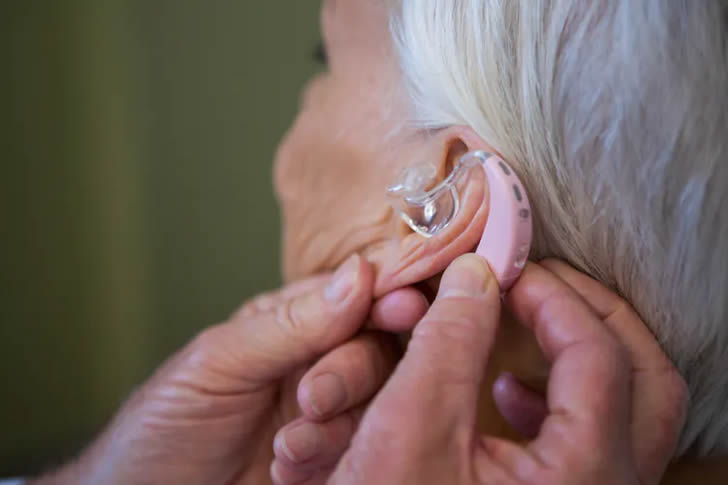Guide to High-Quality and Cheap Hearing Aids
Hearing loss affects millions worldwide, particularly impacting the elderly. Advances in technology now allow for the creation of high-quality, budget-friendly hearing aids that significantly enhance life for those with hearing impairments. This guide details how to find the right hearing aids that balance quality and cost, with a focus on solutions designed for seniors.

Understanding Hearing Aids
Hearing aids are compact electronic devices designed to be worn in or behind the ear to improve hearing. They function by amplifying sounds, enabling individuals with hearing loss to listen more clearly, communicate more effectively, and engage more actively in daily activities. The market offers a wide variety of hearing aids that differ not only in price but also in design, features, and placement methods. Options range from tiny, almost invisible in-ear models to those that sit comfortably behind the ear. Features can include wireless connectivity, directional microphones for better sound quality in noisy environments, and customizable sound settings tailored to the user’s specific hearing loss profile. This variety allows users to choose a hearing aid that best fits their needs and lifestyle.
Factors to Consider When Choosing a Hearing Aid
1. Degree of Hearing Loss: The type and severity of your hearing impairment crucially dictate the choice of hearing aid. These devices are specifically engineered to address different degrees of hearing loss, ranging from mild to profound. Mild hearing loss may require a basic device that simply amplifies sound, whereas more severe forms might need advanced features that can manage complex sound environments and deliver clearer audio.
2. Lifestyle Needs: The way you live your life also plays a significant role in choosing the right hearing aid. For those leading an active lifestyle, durable models that are resistant to moisture and dirt, possibly with waterproof capabilities, would be ideal. On the other hand, if you enjoy listening to music or attend many social gatherings, you might want to look for hearing aids that offer superior sound quality and include features like directional microphones, which can enhance speech understanding in noisy environments.
3. Battery Life: The choice between disposable and rechargeable batteries is another consideration. Rechargeable hearing aids, while potentially more expensive upfront, can offer greater convenience and lower long-term costs. They are particularly beneficial for individuals with limited hand dexterity, such as some seniors, because they eliminate the need for frequent and sometimes challenging battery changes.
4. Features and Technology: Modern hearing aids are equipped with a plethora of technological advancements aimed at improving the user experience. Features such as wireless connectivity allow for streaming audio directly from devices like smartphones and TVs. Directional microphones improve the ability to engage in conversations in noisy settings by focusing on the sound coming from in front of you, while feedback suppression helps eliminate annoying whistles that may occur with volume adjustments. Tinnitus masking features can produce soothing sounds that may help to relieve the symptoms of tinnitus, offering additional comfort.
Finding Affordable Options
High-quality hearing aids can be expensive, but there are ways to find more affordable options:
1. Insurance and Medicare: Check with your insurance provider to see what part of the cost of hearing aids they cover. While original Medicare does not cover hearing aids, some Medicare Advantage plans do.
2. Veterans Benefits: If you are a veteran, you may qualify for hearing aids at no cost through the Veterans Administration.
3. Refurbished Models: Consider purchasing a refurbished hearing aid, which can be significantly cheaper than buying new.
4. Nonprofit Organizations: Some nonprofit organizations offer financial assistance or free hearing aids to those who qualify based on income.
Special Considerations for the Elderly
Hearing aids for the elderly need to be not only effective but also user-friendly. Seniors may have additional physical or cognitive challenges that make handling small devices difficult. Hearing aids with easy-to-use features, such as larger volume controls or preset programs, can be particularly beneficial. Additionally, hearing aids that are compatible with other devices, like telephones or televisions, can greatly enhance the usability and enjoyment for seniors.
The Importance of Professional Fitting
A professional fitting by an audiologist or a licensed hearing aid professional is essential for ensuring the maximum effectiveness of any hearing aid, regardless of its type or brand. These professionals assess your specific degree of hearing loss and tailor the device to meet your individual needs. They also ensure that the hearing aid fits comfortably and securely in your ear, which is critical for long-term use. Proper fitting enhances the device’s functionality, ensuring it delivers the correct amount of amplification while minimizing feedback and background noise.
Conclusion
Investing in a hearing aid represents a significant step towards improving quality of life, especially for individuals experiencing hearing difficulties. By thoroughly assessing your specific hearing needs, researching the various types of hearing aids available, and consulting with hearing care professionals, you can secure a device that not only meets your auditory requirements but also fits your budget. This process ensures that you choose a high-quality, cost-effective hearing aid that enhances your daily interactions and activities, making it a worthy investment in your overall well-being and social engagement.







Recent Comments